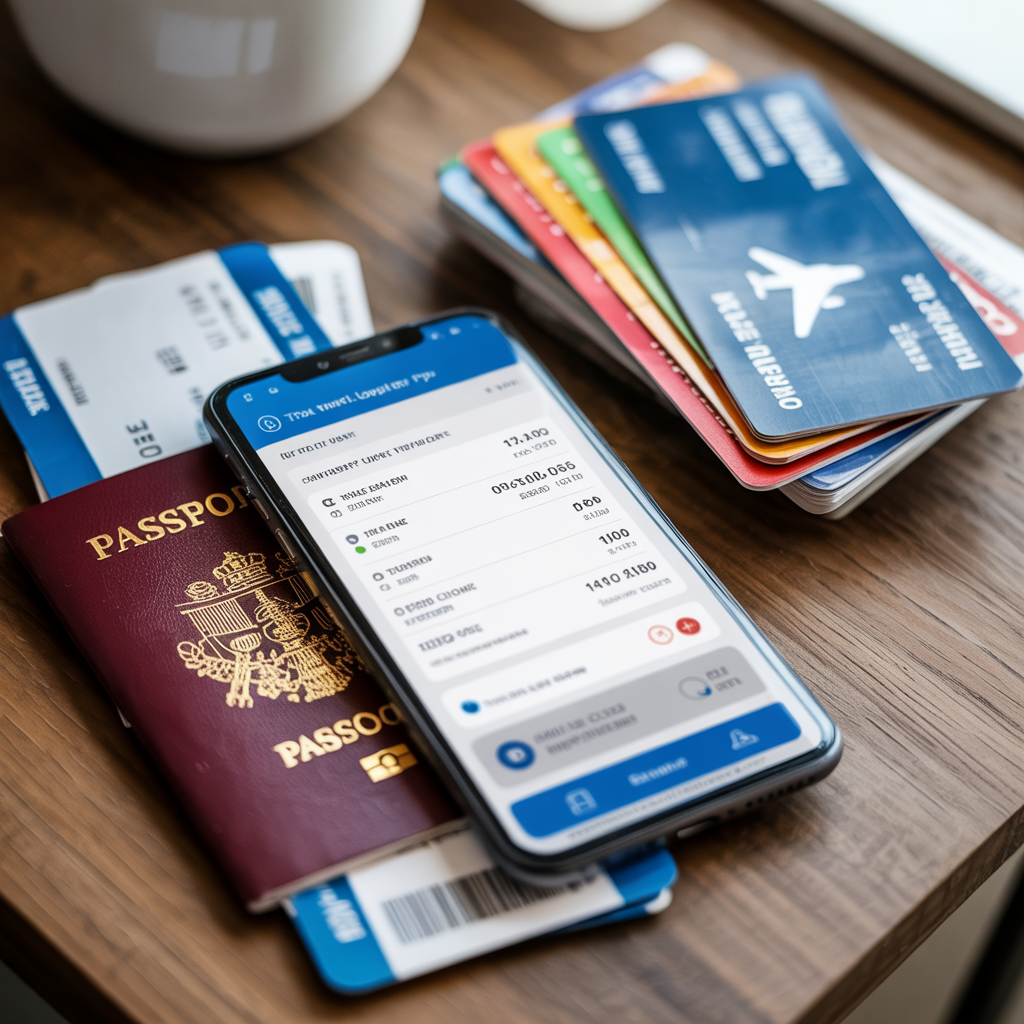Ever spent five hours hunting for flight deals, only to watch the price jump $200 right as you decided to book? Yeah, we’ve all been there. It’s the travel equivalent of stepping in a puddle while wearing socks.
Finding cheap flights doesn’t require special powers or insider connections. It just demands knowing a few sneaky tactics the airlines would rather keep quiet.
I’ve spent years perfecting the art of booking flights for literally half what my friends pay. Whether you’re planning a last-minute getaway or scheduling next year’s dream vacation, these strategies will help you find cheap flights every time without the usual headaches.
The secret isn’t just about when you book (though that matters). It’s about something most travelers completely overlook when searching for deals…
Understanding Flight Pricing Dynamics
How airline algorithms determine prices
Ever wondered why that flight you checked yesterday just jumped $200 overnight? Airlines use sophisticated algorithms that would make NASA engineers scratch their heads.
These pricing systems track over 100 variables simultaneously – everything from how many seats are left to whether it’s Tuesday afternoon or Friday evening.
The algorithm is basically playing a giant game of chicken with your wallet. It knows most business travelers book last-minute and will pay premium prices, while vacation planners book months ahead.
Airlines also track your search history. Keep checking that Miami flight? The algorithm notices and might bump the price, knowing you’re getting serious about booking.
Best days and times to book flights
The “Tuesday at 3 AM” myth is mostly garbage. What actually matters is booking 6-8 weeks before domestic flights and 3-4 months before international trips.
Midweek searches (Tuesday to Thursday) can score you better deals than weekend hunting when everyone and their mother is planning getaways.
The actual best booking window looks something like this:
| Flight Type | Ideal Booking Window | Average Savings |
|---|---|---|
| Domestic | 45-60 days ahead | 10-15% |
| Europe | 120-150 days ahead | 20-25% |
| Asia | 90-120 days ahead | 15-20% |
Seasonal factors that affect flight costs
Flight prices follow predictable seasonal patterns. Summer and holidays? Expensive. January and shoulder seasons? Bargains galore.
Airlines know exactly when demand spikes. Christmas flights to grandma’s? They’ve got you over a barrel and they know it.
But flip the script by traveling during “shoulder seasons” – those magical weeks just before or after peak times when weather’s still decent but crowds have vanished.
The impact of oil prices on flight tickets
Fuel makes up about 30% of an airline’s operating costs. When oil prices spike, ticket prices eventually follow.
The weird thing? When oil prices drop, ticket prices don’t always come down. Airlines pocket the difference or slowly adjust fares if competition forces their hand.
Some airlines “hedge” fuel prices by locking in rates months ahead. Southwest famously saved billions during oil price spikes, while competitors bled cash and jacked up fares.
Master the Art of Flight Search

Top flight comparison websites and tools
Finding dirt-cheap flights isn’t rocket science—you just need the right tools. I’ve tested dozens of search engines, and these consistently deliver the best results:
| Tool | Best For | Special Feature |
|---|---|---|
| Google Flights | Quick searches | Price graphs for flexible dates |
| Skyscanner | Destination inspiration | “Everywhere” search option |
| Momondo | Finding hidden deals | Includes budget carriers |
| Kiwi | Complex itineraries | Self-connect flights |
| Hopper | Price predictions | 95% accuracy on price drops |
Google Flights is my go-to for most searches. The interface is lightning-fast and their price calendar shows you exactly when to fly.
Skyscanner takes the crown if you’re not picky about destinations. Just type “Everywhere” in the destination box and watch the magic happen.
Setting up price alerts for your routes
Stop obsessively checking prices every day. That’s amateur hour.
Most flight search engines let you set alerts for specific routes. Just plug in your dates, enter your email, and boom—you’ll get notified when prices drop.
My strategy? Set up alerts on multiple platforms for the same route. Different search engines catch different deals, so cast a wide net.
The sweet spot for domestic flights is typically 1-3 months before departure. For international, aim for 2-8 months out.
Using incognito mode to avoid price increases
Airlines play dirty. They track your searches and jack up prices when they see you’re interested in a route.
Their trick? Cookies. They store your search history and use it against you.
The fix is dead simple: open an incognito/private browsing window when searching for flights. This prevents websites from accessing your previous search data.
Some frequent flyers swear by using a VPN too. Prices can vary based on your location, so appearing to book from a different country might score you a better deal.
Advanced search operators for finding deals
Flight search is a game, and these power moves will help you win:
- Use the “+” symbol to search nearby airports (LAX+BUR+SNA)
- Add “” before a city to exclude connections there
- Try the 2-3 day search window to find cheaper adjacent dates
- Search one-way flights separately—sometimes booking two one-ways is cheaper
Most search engines have hidden features tucked away in “advanced search” options. Dig around for multi-city options, baggage inclusion filters, and alliance-specific searches.
The power of flexible date searches
The single biggest factor affecting flight prices isn’t the airline or the booking site—it’s when you fly.
Flying Tuesday through Thursday can save you up to 20% compared to weekend flights. Early morning or late-night flights (the ones nobody wants) are typically cheaper too.
The month matters just as much as the day. Flying to Europe in February instead of July could literally cut your fare in half.
Most search engines now offer month-view calendars that highlight the cheapest days to fly. Google Flights’ price graph is particularly useful—it shows price trends across months at a glance.
Leverage Loyalty Programs and Points

A. Airline miles programs worth joining
Flying for free? Yeah, it’s actually possible. But not all airline miles programs are created equal.
Delta SkyMiles and United MileagePlus dominate the US market for good reason. They rarely expire and partner with major alliances, multiplying your earning potential. If you’re a West Coast traveler, Alaska’s Mileage Plan offers insane value with generous earning rates and amazing partner redemptions.
For international travelers, consider these standouts:
| Program | Best For | Key Benefit |
|---|---|---|
| ANA Mileage Club | Asia travel | Round-the-world tickets |
| British Airways Avios | Short-haul flights | Distance-based pricing |
| Air France/KLM | Europe access | Family pooling |
Sign up even if you fly just once a year with that airline. These programs are free money sitting on the table.
B. Credit card travel rewards strategies
Credit cards are your secret weapon in the points game. The right card strategy can score you free flights faster than actual flying.
Chase Sapphire Preferred is my go-to recommendation for beginners – solid bonus, flexible points, and reasonable annual fee. For serious travelers, Amex Platinum’s perks offset its hefty fee if you actually use them.
The real trick? Sign-up bonuses. A single welcome offer can equal 3+ domestic flights. Time these applications strategically around big purchases you’d make anyway.
Always pay in full each month (duh). Interest fees obliterate any travel benefits instantly.
C. Maximizing point redemptions for maximum value
Points aren’t all worth the same. The difference between a smart redemption and a wasteful one can literally be thousands of dollars.
Never use points for:
- Economy domestic flights under $300
- Gift cards or merchandise (seriously, just don’t)
- Seat upgrades on short flights
Instead, target these high-value redemptions:
- International business class (often 3-5 cents per point value)
- Partner airline bookings through alliance programs
- Last-minute flights when cash prices surge
Transfer bonuses are gold mines. When American Express offers a 30% bonus to Virgin Atlantic, your effective redemption value skyrockets.
Remember: miles are a terrible investment. Don’t hoard them forever – airlines devalue them regularly. Earn and burn, friends.
Explore Alternative Booking Strategies

The Hidden City Ticketing Technique
Ever noticed flights to less popular cities are sometimes cheaper than major hubs? That’s where hidden city ticketing comes in.
It works like this: You book a flight from New York to Phoenix with a layover in Denver, but Denver is actually your destination. You simply walk out of the airport in Denver and skip the connecting flight. Why? Because sometimes that ticket costs less than a direct flight to Denver.
But a word of caution—airlines hate this trick. Don’t check bags (they’ll go to the final destination), don’t use it for return flights (they’ll cancel your entire itinerary if you miss a segment), and avoid doing it frequently with the same airline.
Multi-City and Open-Jaw Ticketing
Multi-city tickets let you fly into one city and out of another—perfect for road trips or visiting multiple destinations. Instead of booking separate one-ways (which usually costs more), the multi-city option often saves you serious cash.
Open-jaw tickets are similar—you fly into one city and return from another. Think flying into Paris, traveling by train to Amsterdam, then flying home from there.
Airlines often price these creatively, making them cheaper than the sum of individual flights.
Booking Separate One-Way Tickets vs. Round Trips
Round trips used to always win the price game, but that’s changing fast.
Budget airlines often price each leg separately anyway, so mixing and matching carriers might save you money. I’ve saved hundreds by flying outbound on American and returning on United.
The sweet spot? Checking both options every time. Sometimes round trips win, sometimes separate tickets do. The 5 minutes of extra searching can save you $100+.
Taking Advantage of Error Fares and Flash Sales
Error fares are the unicorns of cheap travel—mistakes in airline pricing systems that can get you ridiculous deals like $200 round-trips to Asia.
Follow accounts like Secret Flying or Airfarewatchdog for alerts. When you spot one, book immediately and ask questions later. These fares can disappear within hours.
Flash sales happen when airlines need to fill seats fast. Tuesday afternoons often see these deals drop, but they’re increasingly random. Setting up fare alerts with Google Flights or Skyscanner keeps you in the know.
Remember—with error fares, don’t call the airline to ask questions. Just book it before they notice the mistake!
Timing Your Purchase Perfectly

The Ideal Booking Window for Different Destinations
You’ve probably heard conflicting advice about when to book flights. One friend swears by booking six months ahead, another says three weeks is the sweet spot. They can’t both be right… or can they?
Truth is, the perfect booking window varies wildly depending on where you’re flying. For domestic flights in the US, that sweet spot is typically 1-3 months before departure. Book earlier and airlines haven’t started competitive pricing; book later and you’re fighting for scraps.
International flights? Different story:
| Destination | Ideal Booking Window |
|---|---|
| Europe | 3-6 months ahead |
| Asia | 4-5 months ahead |
| Caribbean | 2-3 months ahead |
| Australia | 5-7 months ahead |
When to Book for Holiday Travel
Holiday travel pricing follows its own twisted logic. The regular rules? Throw ’em out the window.
Thanksgiving flights? Book in September at the latest. Christmas and New Year’s? Lock those in by early October.
Summer vacation spots get stupid expensive by May, so aim to book those beach getaways in January or February when everyone else is still shivering and not thinking about swimsuits.
Spring break destinations follow a similar pattern – book 3-4 months ahead or prepare to pay premium prices.
Last-Minute Deals: Myth vs. Reality
The dream: waiting until the last second and snagging an almost-free seat because the airline is desperate to fill it.
The reality? Usually disappointment and overpaying.
Those legendary last-minute deals existed back when airlines couldn’t predict demand well. Today’s algorithms are scary good at filling planes.
That said, last-minute deals aren’t completely extinct. They’re just rare and unpredictable. Your best chances:
- Flying during off-peak seasons
- Being flexible with destinations
- Subscribing to error fare alerts
- Having zero attachment to specific dates or times
The gamble rarely pays off for popular routes or holiday travel. If you absolutely need to be somewhere specific, betting on last-minute deals is playing travel roulette with terrible odds.
Consider Alternative Airports and Routes

Flying into secondary airports
Ever wonder why some travelers seem to snag deals that you never see? They’re probably flying into secondary airports.
Instead of landing at major hubs like JFK or Heathrow, try airports on the outskirts. Oakland instead of San Francisco. Burbank instead of LAX. Stansted instead of Heathrow.
Budget airlines love these smaller airports because they charge lower landing fees. Those savings? They pass them right to you.
Yes, you might end up 40 minutes from your actual destination, but saving $200 makes that Uber ride suddenly worth it.
The stopover strategy
This is where things get interesting. Direct flights are convenient but pricey. Adding a stopover can slash your fare dramatically.
I once saved $430 on a flight to Tokyo by stopping in Beijing for 6 hours. That’s like getting paid $71 per hour to enjoy some airport dim sum.
Many airlines even offer free stopover programs. Turkish Airlines? Free hotel in Istanbul. Icelandair? Free Iceland layover en route to Europe.
Finding hub airports with competitive pricing
Airlines battle fiercely at their hub airports. American in Dallas. Delta in Atlanta. Emirates in Dubai.
When airlines compete, you win. These hubs often have surprisingly competitive fares, especially for international flights.
Hub pricing works in your favor when multiple carriers fight for the same routes. Check which airlines consider your destination a major connection point.
When to consider nearby cities
Sometimes the best deal isn’t to your destination at all.
Flying to Milan instead of Rome? Train tickets between Italian cities are cheap, and you’ll save enough on airfare to cover a nice hotel night.
This trick works brilliantly for expensive destinations. Can’t afford direct to Paris? Try Brussels plus a $29 train ticket.
The golden rule: if you can save more than $150, and the alternative city is within 3 hours by train or bus, always check that option.

Navigating the complex world of flight pricing doesn’t have to be overwhelming. By understanding pricing dynamics, mastering search techniques, maximizing loyalty programs, and exploring alternative booking strategies, you can consistently secure better deals on your travel adventures. The timing of your purchase and flexibility with airports and routes can further enhance your savings potential.
Armed with these strategies, you’re now equipped to approach your next flight booking with confidence and expertise. Start implementing these techniques today to stretch your travel budget further and experience more destinations without breaking the bank. Happy travels—and even happier savings!




